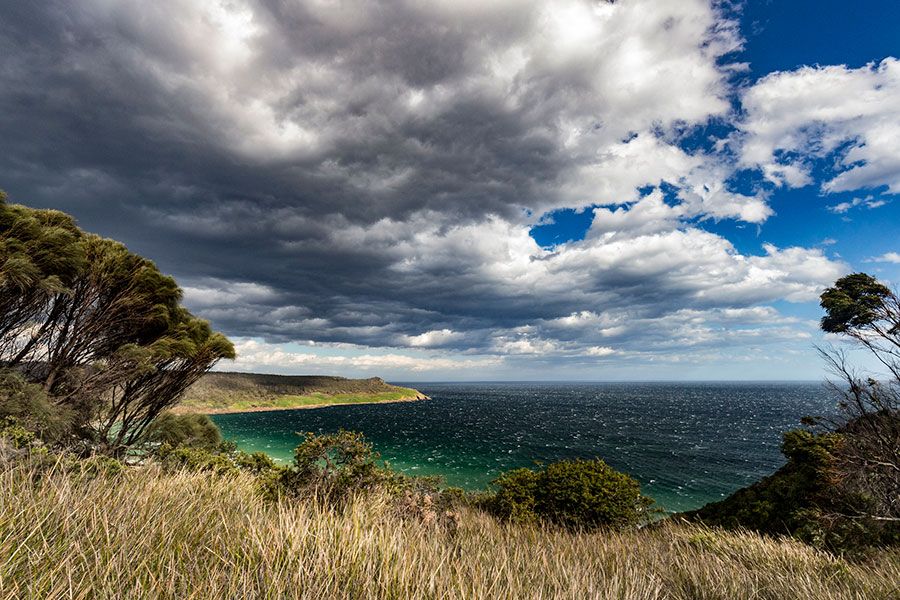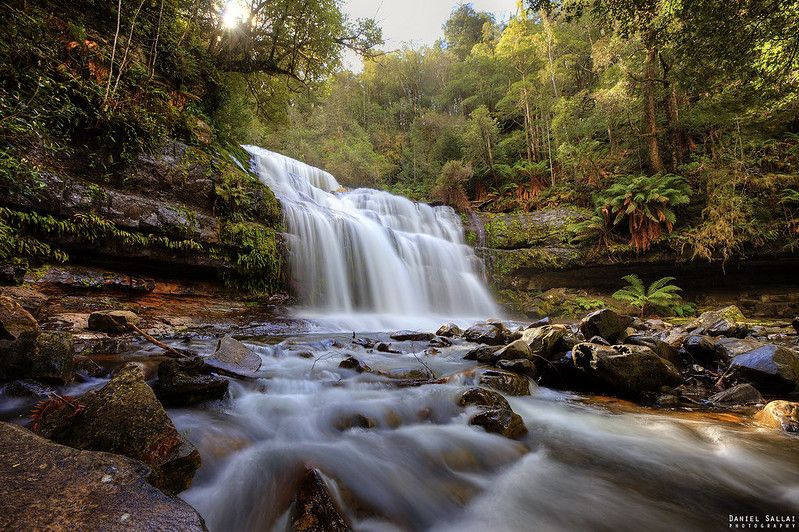Tasmania is known for its spectacular beauty, rich heritage, and abundant wildlife. The island was permanently settled by Europeans in 1803 as a penal settlement of the British Empire.
The first humans arrived in Tasmania around 40,000 years ago. Tasmania was known by its Aboriginal inhabitants as Trowunna and was divided into nine tribal areas.
Tasmania is an archipelago of 334 islands with the size of Ireland. There are often flights and it takes less than an hour’s flight south of Melbourne to visit Tasmania. This is Australia’s only island and the last landmass before Antarctica. It is an ancient, heart-shaped land, an extraordinarily diverse from New Zealand, South America, mainland Australia.
The tallest flowering trees in the world, reaching more than 100 meters in height, tower over millennia-old precious wildlife-filled alpine plateaus and button grass plains that release tannins that stain the pure water streams the color of tea. Some 2,800 miles of coastline, including the highest cliffs in the Southern Hemisphere, hug a landscape of such raw, ravishing and largely untouched natural beauty that it leaves one gasping in astonishment at almost every twist and turn as one travels around Tasmania.

Photo credit: Scott Cresswell / Flickr
Explore Cradle Mountain-Lake St. Clair National Park
Cradle Mountain-Lake St Clair National Park is located in the middle of the island of Tasmania.
This is one of Australia’s most beautiful national parks. With magnificent views of alpine lakes and majestic mountains, it’s no surprise the Overland Track remains the number one way to explore this stunning national park.
Stop by waterfalls and explore myrtle forests with beech trees more than 60 million years old.

Photo credit: A. Sparrow / Flickr
Look Up The Aurora Australis
Tasmania has year-round opportunities to see the southern lights and will give you a chance to see this amazing phenomenon.
The southern lights or aurora australis are visible in the southern hemisphere only. The scientific explanation for aurora australis is the same as its northern sibling aurora borealis. When charged particles emitted by the sun strike atoms in the atmosphere of earth, electrons in those atoms change energy states and when they return to their resting state they emit light.

Photo credit: Charlievdb / Flickr
Hobart
Hobart, capital of Australia’s island state of Tasmania, sits on the River Derwent. It is famous with its Salamanca Place, old sandstone warehouses host galleries and cafes.
With its captivating history, picturesque waterways, rugged mountains, and gourmet experiences, the city has something for everyone.
Hobart is close to many of southern Tasmania’s best travel experiences such as historic Port Arthur and the rugged Tasman Peninsula to Bruny Island, the Huon and Derwent Valleys and Mount Field National Park.

Photo credit: Charly W. Karl / Flickr
Freycinet National Park
Freycinet is a national park on the east coast of Tasmania, Australia, 125 km northeast of Hobart and home to Tasmania’s most photographed view and situated on the breathtaking east coast
The powder-white beaches and transparent waters of Tasmania’s oldest park, formed over 400 million years, are home to native wildlife of 49 species that can only be found in Tasmania.
You can Kayak, snorkel, dive or swim in the clear waters to get up close to abundant marine life.

Photo credit: David Burke / Flickr
Tasmanian Devil Unzoo
The Tasmanian Devil Unzoo is not a nature park and not a zoo. It is a four-in-one wildlife nature experience that combines up-close animal encounters, wildlife adventures, a Tasmanian native garden and original art.
Tasmanian Devil Unzoo is the world’s first intentional Unzoo—a revolutionary project to create a model wildlife and nature experience of the future. During your time with us, you’ll be inspired, intrigued, challenged and entertained. Sometimes, you might even find us a little outrageous. Our hope is that your visit to the Unzoo will challenge you to think about the natural world and your place in it, in a completely new way.
After 10 years of effort, it is now working well with wild wallabies, echidnas, possums, native fish and nearly 100 bird species living around our Unzoo bush garden.

Photo credit: Rexness / Flickr
World’s Tallest Trees
The Centurion is the world’s tallest known individual Eucalyptus regnans tree. The tree is located in southern Tasmania, Australia and was measured by climber-deployed tapeline at 100.5 meters
The diameter of Centurion is 4.05 metres, its girth exceeds 12 metres, and its volume has been estimated at 268 cubic metres. The tree is in a small patch of very old forest surrounded by secondary forest.
The mountain ash Eucalyptus regnans is well represented in Tasmania but also grows to some extent on the Australian mainland in Victoria and southeast Australia. More than 140 specimens have been recorded in Tasmania above 85 metres in height with a number of these well over 90 metres.

Photo credit: Manuel Neumann / Flickr
Tasman National Park
Famous for its soaring sea cliffs and monumental rock formations and the World Heritage-listed Port Arthur Historic Site, Tasman National Park is an area of dramatic beauty and natural diversity.
Tasman National Park takes up more than 107 km². Tasman National Park is also renowned for its golden beaches, sculptured granite cliffs, and its world-famous coast track.
The tracks are carved throughout the park and range from pleasant and leisurely strolls to challenging multi-day walks.

Photo credit: Steven Penton / Flickr
Bruny Island
Bruny Island has some of Tasmania’s most beautifully preserved natural environments with abundant wildlife and stunning cliff top views.
The island is Tasmania’s premier island destination. Including the Bruny National Park, the island provides the ultimate Tasmanian wilderness experience with many spectacular bushwalks, coastal tracks or beach strolls.
The island showcases a variety of artisan cheese, oysters, seafood, berries, fudge, wine, whisky, gin, beer and a selection of cafes and restaurants. There are lots of places to stay with accommodation ranging from friendly campsites to luxury beachfront retreats.

Photo credit: shuttles / Flickr
Bay of Fires
Famous for its crystal-clear waters, white sandy beaches and orange lichen-covered granite boulders, the Bay of Fires is one of Tasmania’s most popular conservation reserves.
The bay was given its name in 1773 by Captain Tobias Furneaux.
The Bay of Fires is located on the northeastern coast of Tasmania. It includes a gorgeous coastline that stretches over 50 kilometers from Binalong Bay. The Binalong Bay and nearby Humbug Point Nature Recreation Area include lovely spots like Skeleton Bay, Grants Point, and Elephant Head.

Photo credit: Daniel Sallai / Flickr
Liffey Falls
Liffey Falls is considered one of the island state’s prettiest waterfalls and is a series of four distinct tiered–cascade waterfalls on the Liffey River, is located in the Midlands region of Tasmania.
The area surrounding Liffey Falls was a meeting place for Tasmanian Aborigines for thousands of years.
The waterfall is best viewed towards the end of winter through to early spring.
Feature photo credit: Steven Penton / Flickr
Want to learn more about other sustainable destination? Check out section sustainable travel destinations.







